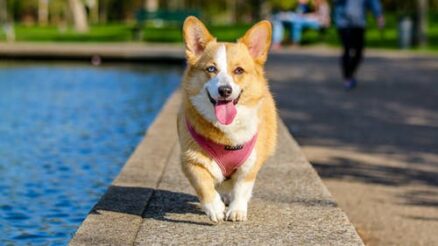Regular grooming is beneficial for your pets to help keep their health and well-being, as well as their look. It involves bathing, brushing fur and teeth, trimming nails, cleaning ears, and other hygienic activities to help keep them healthy and clean. However, it is necessary to follow the appropriate techniques to stay clear of getting injured or being uncomfortable.
How to Groom and Bathe Young Pets Properly
Comparable to puppy and kitten care, there’s almost no difference in the steps in grooming them. But you need to know that dogs are usually easier to bathe and brush than cats because of their fur and the fact that they are not as sensitive as cats.
For more info, here’s a step-by-step overview of grooming and bathing kittens and puppies:
- Start grooming your kitten at around six months, as they are noise-sensitive and jumpy. Younger ones may be too scared of the procedure, particularly when using a blower. It is also when they’re no longer teething and all fully grown teeth have appeared.
- Give puppies their first proper grooming session after their first vaccination. This ensures they are not in danger of catching any transmittable diseases.
- Gently brush their fur in the direction the coat grows using a soft-bristled brush to remove tangles and dirt. A rubber brush can help eliminate dead hair on kittens and puppies with short fur. Focus on their feet, tail, and face to ensure all dirt is removed.
- Bathe them with lukewarm water in a safe and secure container. Use a mild shampoo formulated specifically for cats or dogs and gently rub it right into their fur to soften and condition pet’s coat. Avoid getting suds into their ears and eyes, as the soap irritates them.
- Use a damp towel to clean areas around the eyes, ears, and anus.
- Dry up with a clean towel and use a blower set on a cool mode to finish off. Make it a habit to give your kittens baths and brushes every 6 to 12 weeks, especially long-haired ones like Persians and British longhair. On the other hand, bathe your pups not more than once a month unless needed.
- Trim your pet’s nails using a nail clipper or grinder made for pet dogs or cats. If you can’t do it by yourself or don’t have time, bring them to a certified groomer for a professional cat or dog grooming services.
- Brush your pet’s teeth at least twice or three times a week using pet-friendly toothpaste.
Techniques on Grooming and Bathing Senior Pets
11 to 14-year-old cats are classified as elderly and geriatric at 15 to 25 years of age. Meanwhile, larger breeds of dogs are considered senior at 7 to 10 years old and geriatric at 10 and above. In addition, smaller-sized breeds are considered elderly at 11 to 12 and geriatric at 12 years old and above. To help senior dogs and cats be healthy, clean, and content, they need geriatric care and extra attention to their grooming.
Here’s how you can correctly shower and groom a senior pet:
- Brush their fur in one direction using a soft-bristled brush to get rid of tangles and dirt. You can use a rubber brush for short-haired pets as these are gentler on joints but still remove shedding hair.
- Bath them with pet shampoo for seniors or elderly pets. Use warm water during bathing, as hot water may trigger discomfort and irritation. Use a calm voice and mild strokes to calm your pet.
- Dry up with a clean towel and use a blower set on low heat setting to complete. Make sure the blower is not too close to your elderly pet’s face, especially if they have delicate skin or respiratory problems.
- Clean ears, eyes, feet, and tail with a damp towel or cloth. Carefully take out wax build-up to prevent it from hardening and trap bacteria in the ear canal. Examine their ears regularly as they might get more prone to infection and ear mites with age.
- Trim their nails using an appropriate nail clipper or grinder made for senior pets.
- Continue providing regular oral care by brushing their teeth at least two times or thrice a week using toothpaste made specifically for pets.
The Bottom Line
Pet grooming is an essential part of looking after the health and well-being of your furry friend. When doing it in your home, you must follow proper methods to make sure that it does not injure or cause distress to your pets. You should also customize the grooming routine based on age. This ensures that all their needs are met and they are given appropriate care for their age group. If unsure, work with a professional groomer to make sure that your pet is safe from injuries or other problems.


